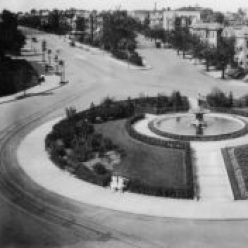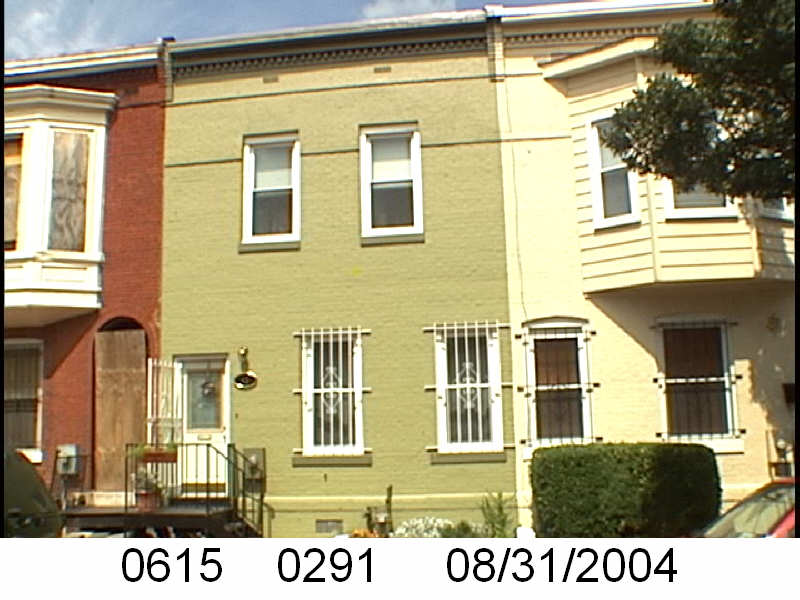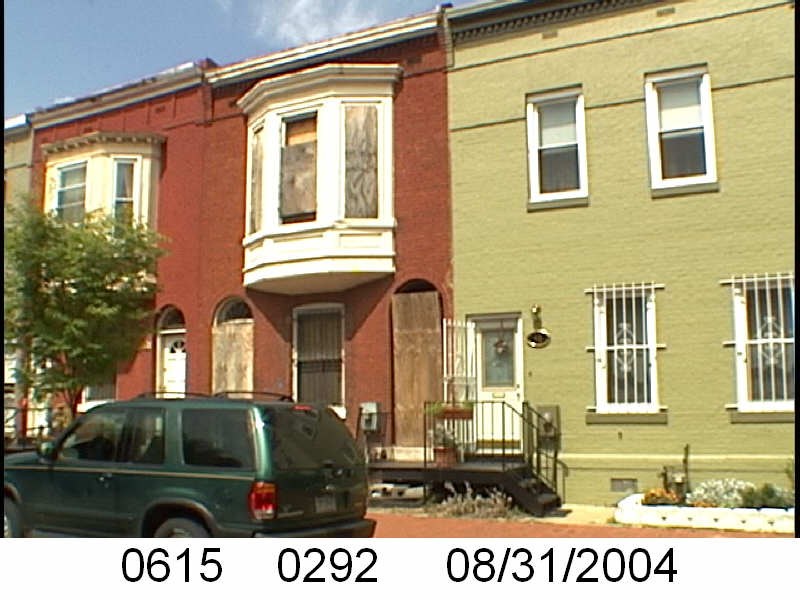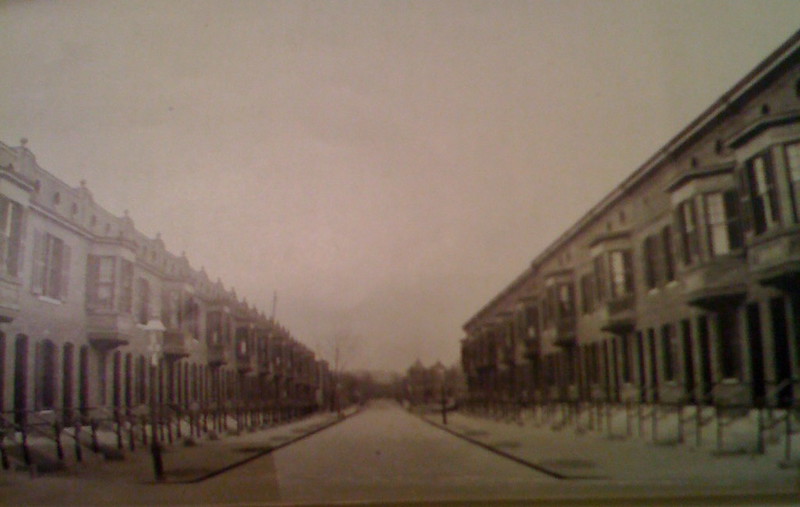This is a continuation of parts 1 & 2. I search the Library of Congress’ Chronicling America site for newspaper articles about the Washington Sanitary Improvement Company (WSIC) and Truxton Circle. Most of it are auction sales when WSIC off loaded their properties in the mid-late 1950s.
For Rent- Flats– The times. [volume], November 27, 1897, Page 6. “FOR RENT Sanitary Flats for white tenants only; Bates St., between P and Q, N. Capitol and 1st sts. nw.; 3-4 rooms; baths; cellar; separate entrance and yards; modern improvements; price, $10 to $12.50; erected by WASHINGTON SANITARY IMPROVEMENT Co. office 1819 Q st. nw. 8-9 a.m 12-1:30.4-7 p.m.”
Building Permits Issued– Evening star. [volume], May 31, 1901, Page 3. “Washington Sanitary Improvement Company, fifteen two-story brick fiats, 14 to 42 O street northwest. Cost, $35,000.”
Opening of Bates Street-Adverse Action on Application of
Washington Sanitary Improvement Co.– Evening star. [volume], March 16, 1903, Page 7. ” The Washington Sanitary Improvement
Company has applied to the Commissioners for the opening of Bates street through the center of square 552 by condemnation proceedings. The square is located between P, Q, 1st and 3d streets northwest. Engineer Commissioner Biddle has recommended adverse action, saying:
“The president of the Washington Sanitary Improvement Company should be informed that the funds now available for opening alleys and minor streets are not sufficient to justify the Commissioners in taking up any new cases until pending condemnations are paid for and assessments for benefits are paid in. The law provides that the entire amount of damages and expenses of condemnation shall
see assessed against lots and parts of lots in the square in which the minor street is opened as the jury may determine them to be benefited, and the Commissioners have no authority to exempt any property from assessment on the ground that dedications have been made; that this matter is in the province of the jury.” ”
Building Permits Issued– Evening star. [volume], May 23, 1903, Page 11. “Washington Sanitary Improvement Company, sixteen two-story brick dwellings, 200, 202, 204, 206, 206, 210, 212, 214, 216, 218,
220, 222, 224, 226, 228 and 230 Q street northwest; cost. $48,000.”
Auction Sales- Thos. J. Owen & Son– Evening star. [volume], October 31, 1952, Page C-5. Auction of 48 Bates Street NW ($7750).
Auction Sales- Thos. J. Owen & Son– Evening star. [volume], April 09, 1953, Page B-17. Auction of 39 Bates Street NW ($7750).
Auction Sales- Thos. J. Owen & Son– Evening star. [volume], July 15, 1953, Page C-5 ; Evening star. [volume], July 10, 1953; Evening star. [volume], July 20, 1953, Page B-9. Auction of 28A Bates Street NW ($7,750), 35 Bates Street NW ($7,750) and 224-A Que Street NW ($7,750).
Auction Sales- Thos. J. Owen & Son– Evening star. [volume], April 09, 1954, Page C-8. Auction of 131 Bates Street NW ($7750).
Auction Sales- Thos. J. Owen & Son– Evening star. [volume], May 28, 1954, Page C. Auction of 132 Q Street NW ($8000), 26A O Street NW ($7500), and 130 Q Street NW ($15,000).
Auction Sales- Thos. J. Owen & Son– Evening star. [volume], July 27, 1954, Page B-13. Auction of 135 Bates Street NW ($7750) and 205 Bates Street NW ($7750).
Auction Sales- Thos. J. Owen & Son– Evening star. [volume], September 18, 1954, Page B-4. Auction of 60 Bates Street NW ($7750).
Auction Sales- Thos. J. Owen & Son– Evening star. [volume], November 03, 1954, Page C-6, Evening star. [volume], November 13, 1954, Page A-17. Auction of 140 Q Street NW ($8000).
Auction Sales- Thos. J. Owen & Son– Evening star. [volume], December 03, 1954, Page C-7. Auction of 204 Bates Street NW ($7,750), 200 Bates Street NW ($8000), and 129 Bates Street NW ($3650).
Auction Sales- Thos. J. Owen & Son– Evening star. [volume], April 21, 1955, Page B-23. Auction of 22A O Street NW ($7500) and 119A Bates Street NW ($7500).
Auction Sales- Thos. J. Owen & Son– Evening star. [volume], May 14, 1955, Page A-15. Auction of 214A Bates Street NW ($7,750).
Auction Sales- Thos. J. Owen & Son– Evening star. [volume], September 07, 1955, Page C-8. Auction of 1545A 3rd Street NW ($7500).
Auction Sales- Thos. J. Owen & Son– Evening star. [volume], September 30, 1955, Page B-11. Auction of 215-215A Bates Street NW ($7750), 20A Bates Street NW ($7750), and 66 Bates Street NW ($7750).
Auction Sales- Thos. J. Owen & Son– Evening star. [volume], October 27, 1955, Page B-19. Auction of 1531 Third Street NW ($7000).
Auction Sales- Thos. J. Owen & Son– Evening star. [volume], May 07, 1956, Page B-11. Auction of 1519 3rd St NW ($7750) and 205 P Street NW ($8000).
Auction Sales- Thos. J. Owen & Son– Evening star. [volume], July 21, 1956, Page A-14; Auction of 29-29A Bates St NW ($7500).
Auction Sales- Thos. J. Owen & Son– Evening star. [volume], July 31, 1956, Page B-12. Auction of 214 Bates Street NW ($7750), 54 Bates Street NW ($7500), 200A Bates Street NW ($8000) and 132A Que Street NW ($8000).

 So like 45 Bates Street the Truxton Circle (and other parts of DC) lots owned by WSIC are sold off in one big lot to three men, business partners, Nathaniel J. Taube, Nathan Levin and James B. Evans for $3 million dollars in June of 1950.
So like 45 Bates Street the Truxton Circle (and other parts of DC) lots owned by WSIC are sold off in one big lot to three men, business partners, Nathaniel J. Taube, Nathan Levin and James B. Evans for $3 million dollars in June of 1950. That same day the business partners sold the other 1/2 interest to Mrs. Irene Brown, Mr. James E. Rogers and his wife Perlina Rodgers. The three also borrowed $2,525 from the same trustees as the Nelsons, Abraham H. Levin and Robert G. Weightman. However their ownership didn’t last very long and they went into foreclosure in September 1952.
That same day the business partners sold the other 1/2 interest to Mrs. Irene Brown, Mr. James E. Rogers and his wife Perlina Rodgers. The three also borrowed $2,525 from the same trustees as the Nelsons, Abraham H. Levin and Robert G. Weightman. However their ownership didn’t last very long and they went into foreclosure in September 1952.
